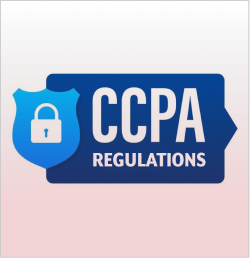The latest news and blogs


How to negotiate successfully with a corporate strategic partner
Founders often think more meetings mean progress, but it’s real alternatives that move deals forward—and progress only counts once someone’s willing to put it on paper. That’s doubly true when you’re negotiating with a corporate strategic partner.
When you’re negotiating a deal, it’s usually harder to get to “yes” (or even a clear “no, let’s stay in touch”) with a corporate strategic partner than with a venture capital (VC) fund. VC funds live by a simple rule: a fast “no” is the next best thing to a “yes.” Corporates tend to take meetings to learn, not to decide. Meanwhile, your/the founder’s runway keeps shrinking.
So why should Latin American (LatAm) founders engage corporates today? Because VC investment in the region is still down by almost two-thirds from its peak. VC funding totaled about $15.8 billion in 2021, fell to ~$7.9 billion in 2022 and ~$4 billion in 2023, then ticked up modestly to around $4.2 billion in 2024.
The case for partnering with a corporate
Startups bring speed, innovation, and focus. Corporates bring customers, distribution, compliance, and brand strength. If structured thoughtfully, the relationship can deliver faster validation and a clearer path to scale.
In LatAm, there are also some active corporate venture capital (CVC) initiatives like Telefónica’s Wayra (now an investing arm with a “we’ll be your first customer” muscle), Mercado Libre’s MELI Fund (active since 2013, tied to commerce/fintech rails), and Chilean Copec’s Wind Ventures San Francisco-based team on the hunt for innovation.
The three paths to working with a strategic
1. Sell With Them (Paid Pilot → Limited Rollout → Scale): Don’t ask for “a partnership.” Ask for a small, paid pilot that proves a single commercial claim in a controlled environment. Then, a named rollout (a region, a segment) with basic enablement: a pricebook SKU, seller training, and who gets credit. You won’t set their timeline alone; what you can do is get a short framework letter that names the sponsor, lists the buying group, the security steps, and the next decision date. Remember, enterprise buying groups are large, on average thirteen people, so map them early.
2. Take Their Money: Treat a CVC check as fuel and validation, not as a guaranteed acquisition path. In mid-2024, corporates participated in ~23% of US VC deals (lowest share since 2014, but still meaningful). Rounds with CVCs also skew larger. Keep the terms market, meaning standard for institutional investors. That usually means 1x non-participating preferred (investors get their money back first, then share in the upside with founders, but not both), standard pro rata rights (the right to invest more in future rounds to maintain their ownership), and no unusual control provisions like board vetoes or blocking rights. Avoid terms that restrict flexibility later, for example, multiple liquidation preferences, participating preferred, or expansive anti-dilution protections that go beyond the usual broad- based weighted average formula.
3. Sell to Them: M&A usually happens only after one of the first two paths has worked (i.e., once you’ve sold with them or taken their investment). It’s the natural outcome of a proven relationship, not a starting strategy. A good example familiar to many LatAm founders is Visa’s acquisition of Brazil’s Pismo in early Pismo had already built a strong commercial relationship with Visa, demonstrating real scalability in issuer processing before any acquisition talks began. That sale wasn’t a plan, it was the result of execution, alignment, and trust built over time.
A fintech example (how this plays out)
Imagine you already have a working payments rail and twenty beta customers. You’re ready to scale by partnering with a major player, Visa, Mastercard, Amex, or a large issuer-processor.
In the first meeting, your goal isn’t to sell, it’s to learn. Ask questions, understand how the corporate buys new technology, who owns the problem you’re solving, and what internal hurdles you’ll face. Keep it short and focused on fit, not features.
When you walk into the second meeting, come prepared with three things:
1. A two-page pilot plan that clearly defines the scope of the test, the data to be shared, one measurable success metric, and a brief security checklist. This shows discipline and reduces perceived risk.
2. A one-page framework letter that names your internal sponsor, identifies who will sign the statement of work (SOW), explains what happens if the pilot succeeds, and sets a specific review date. That letter keeps everyone aligned on next steps.
3. A draft order form for day 91, the moment the pilot ends, so the company can move straight into a commercial rollout if it works.
If they want distribution, tie it to incentives (quota credit, referral fee) and a defined segment. If they want to invest, run that on a separate track so one delay doesn’t sink the other. If it works and you scale, M&A may show up as it did when Visa eventually acquired Pismo, but you never build a plan around that outcome.
The negotiating playbook: How to keep leverage
Run a process: Talk to two or three strategic partners at once — and include at least one financial VC in the mix. That creates real alternatives, which give you leverage. Set soft clocks for each conversation: for example, “We’re kicking off pilots next month; here’s our framework letter.” A defined timeline signals momentum. Remember, alternatives move deals; requests don’t.
Anchor price outside the corporate: Corporates are wired to negotiate like procurement teams; they’re trained to squeeze suppliers. VCs, by contrast, price growth and potential. The cleanest move is to get a standard VC term sheet first, then invite the strategic to follow on those same terms. It anchors the valuation and gives your internal champion something credible to point to when they push for approval.
Separate commercial from investment: Your pilot’s SOW should stand on its own, with clear deliverables, scope, and timing. Your equity round should close independently. When the two are linked, one delay can kill the other. Keep both tracks moving separately so progress on one doesn’t depend on the other.
Get dates on a calendar they care about: You probably can’t dictate 30/60/90-day milestones, but you can align the next review to something they already plan around; a budget gate, quarter-end, or strategic planning cycle. Add those dates to the framework letter so everyone’s working toward the same internal deadlines.
Lock in terms that keep your options open:
Avoid rights that scare off future investors or buyers: Rights of first refusal (ROFR) or first negotiation (ROFN) sound harmless but often kill momentum. They make others hesitant to invest or acquire because they don’t want to serve as the “test bidder.” If you can’t avoid granting one, narrow it by product, geography, or business line and limit it to no more than 90 days. Use National Venture Capital Association (NVCA) model language as your baseline.
Keep exclusivity narrow and earned: If a corporate insists on exclusivity, make it conditional. Limit it by product, channel, or country, and tie it to measurable performance targets or minimum purchase commitments. Always include a firm end date so exclusivity doesn’t outlive its purpose.
Keep governance light and flexible: You don’t want a strategic sitting in your boardroom shaping decisions. Offer an observer seat, not a board seat. Standard information rights are fine, but avoid giving vetoes over new business lines, future financings, or potential sales. Keep your board agile and founder-controlled.
Protect your intellectual property (IP) and data from overreach: License only what’s necessary for the pilot. Be explicit about who owns the data, who can use telemetry or training data, and who controls derivative works. In AI or data-driven businesses, sloppy language here can cost you your moat.
Limit most favored nation (MFN) provisions: If a partner insists on an MFN (Most Favored Nation) clause, make it specific. Cap it to the exact SKU, price, and term they’re getting. A broad MFN can freeze your pricing flexibility and block future deals.
Avoid procurement purgatory: Corporates love process, sometimes too much. To avoid months of red tape, propose a short-form, prepaid pilot agreement with sandboxed data. Once the pilot works, you can move to the full 60-page Master Services Agreement (MSA).
Turn the playbook into action
You don’t need to overhaul your entire fundraising plan to get started. Here’s a short list of moves founders can execute right away to build momentum and keep leverage when working with strategics:
1. Line up at least two strategic partners and one VC. Let each know you’re kicking off pilots next month; it signals focus and scarcity.
2. Come to the second meeting with a two-page pilot plan and a one-page framework letter. Aim for signatures, not another round of scheduling.
3. Keep the investment and commercial discussions separate. Each track should move on its own timeline so one doesn’t stall the other.
4. Mark up anything that limits flexibility. Redline ROFRs, ROFNs, broad exclusivity, and control rights that could unsettle future investors. Use NVCA model language as your reference point.
5. Set the next decision date around their internal clock. Tie it to budget reviews or quarterly planning—that’s when decisions get made.
6. Know when to walk. If nothing is on paper after a few meetings, assume it’s a slow “no” and move on.
One final reminder
Most venture-backed startups won’t return capital. That’s not a reason to play it safe, it’s a reason to structure every deal so a single “no” doesn’t sink the company. Keep pilots short. Keep terms clean. Always build real alternatives.
At PAG Law, we help founders navigate the push and pull between startups and corporates—structuring deals that create alignment without giving away leverage. We’ve seen how the right framework turns a corporate relationship into a growth engine, and how the wrong terms can box a company in. If you’re exploring a strategic partnership or CVC investment, let’s talk. The goal isn’t just to get to “yes.” It’s to get there on your terms.



Responding to California's New CCPA Regulations: What Businesses Need to Know About Risk Assessments, Automated Decision-Making and Cybersecurity Audits
On May 9, 2024, Maryland Governor Wes Moore signed the Maryland Online Data Privacy Act of 2024 (MODPA), making Maryland the 18th state to enact comprehensive privacy...

Landmark-Privacy-Law-Enforcement-Settlement-Highlights-Costs-of-Non-Compliance
On May 9, 2024, Maryland Governor Wes Moore signed the Maryland Online Data Privacy Act of 2024 (MODPA), making Maryland the 18th state to enact comprehensive privacy...

SUBSCRIBE
PAG Law has a rich history of advocating for founders and entrepreneurs.
Our commitment to excellence has driven numerous
successful outcomes in complex legal matters.



